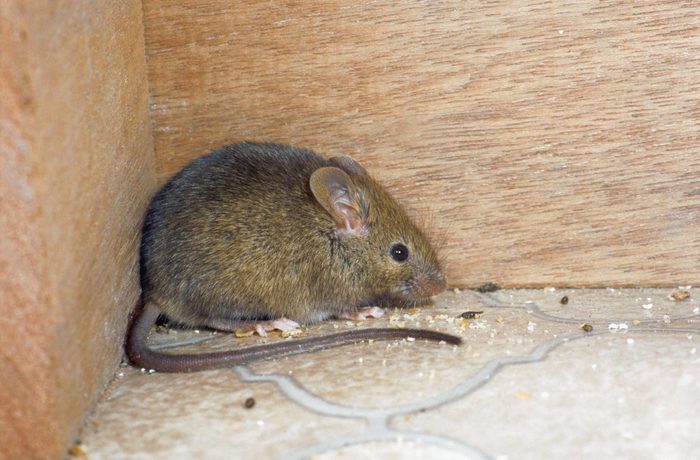
House Mouse
The house mouse (Mus musculus) is one of the most common mammals worldwide. It can be found in all parts of the United States and Southern Canada. Adults are about five to seven inches long, with large, round ears and mostly hairless tails.
House mice prefer grains and seeds, but will eat pretty much anything humans eat. It stays within a limited territory about 30 feet in diameter and travels along established pathways. Nocturnal, it makes 20 to 30 foraging trips each night, leaving 40 to 100 droppings scattered around in a single day.
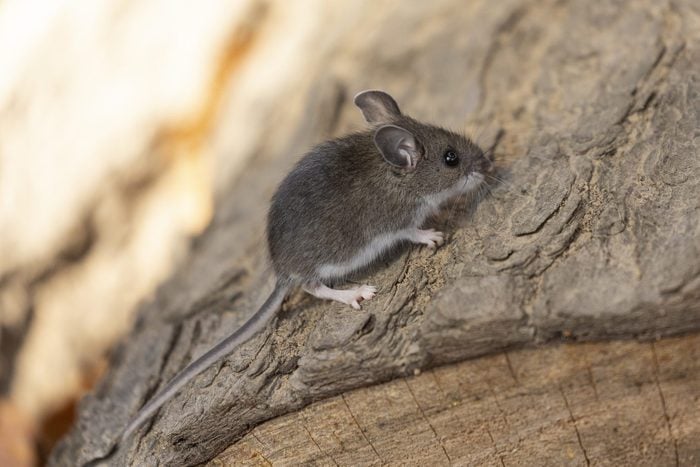
Deer Mouse
The deer mouse (Peromyscus maniculatus), sometimes called the field mouse, is a little bigger than a house mouse. It’s easily distinguishable by its deer-like color, due to dense fur that’s brown on the upper body and white below. The tail hair is similarly brown and white.
The deer mouse ranges throughout North America, although it’s more common in the East than the West. Deer mice are primarily nocturnal omnivores (i.e. they’ll eat meat and plants). It’s important to identify this species. Unlike the house mouse, deer mouse droppings can spread hantavirus, which causes a potentially fatal lung condition in humans.
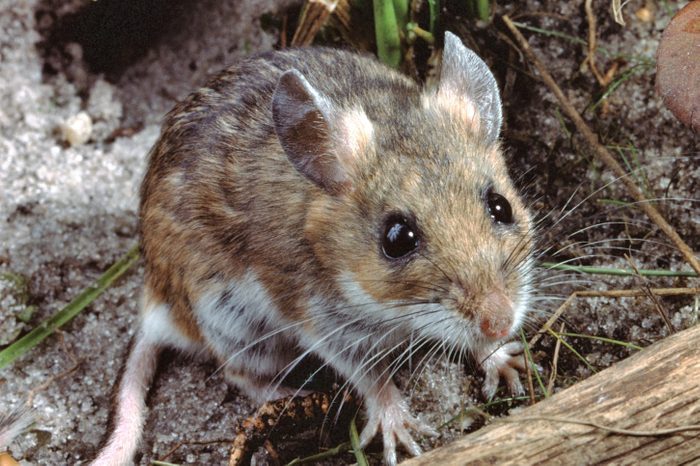
White-Footed Mouse
A white-footed mouse (Peromyscus leucopus) can be difficult to distinguish from a deer mouse, because they’re basically the same size and color. If you look closely, however, you’ll see the white-footed mouse has larger hind legs and less definition between the two colors on its tail.
It’s sometimes called a wood mouse, but that’s actually a different species native to Europe and Asia. These mice prefer to live in the hardwood forests of eastern Canada and the northeastern United States, but can be found as far west as the Rocky Mountains and as far south as the Yucatán Peninsula.
White-footed mice have excellent homing skills and can find their way home from up to two miles. They can also spread hantavirus.
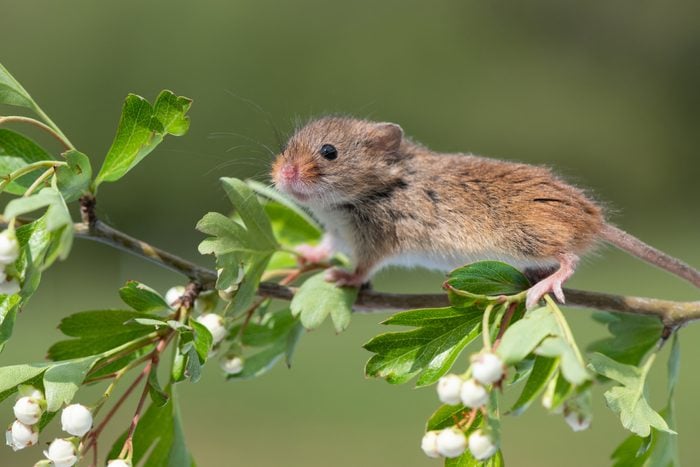
Western Harvest Mouse
The Western harvest mouse (Reithrodontomys megalotis) lives primarily in the West from British Columbia to southern Mexico, but can be found as far east as Indiana. It’s four to six inches long including the tail, with brown fur on the upper body and white fur below.
This mouse is active all day and loves seeds. Like most mice, it doesn’t hibernate during the winter. While it prefers the outdoors, it will seek shelter in buildings during the cold months. It isn’t known to carry hantavirus.
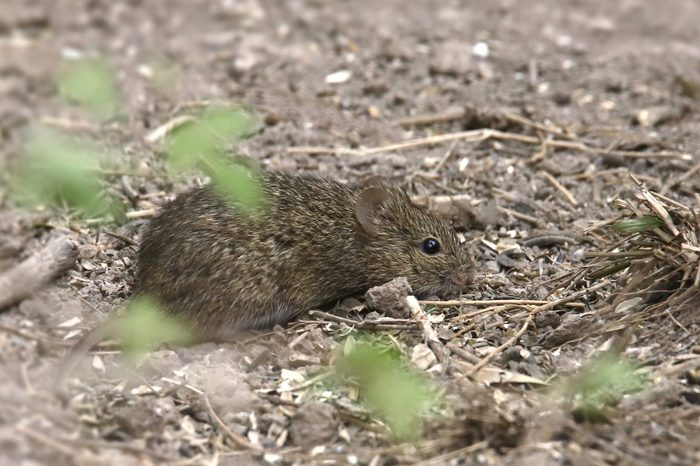
Cotton Mouse
The cotton mouse (Peromyscus gossypinus) inhabits U.S. woodlands and swamps, south from Texas to Florida and as far north as southern Virginia. It gets its name from building nests from raw cotton. It has grayish fur on the upper part of the body and white fur below.
Adults can be up to eight inches, including the tail. It’s nocturnal and omnivorous, feeding mostly on seeds, berries and insects. It doesn’t hibernate, but goes into a state of inactivity known as torpor during the hottest part of the summer.
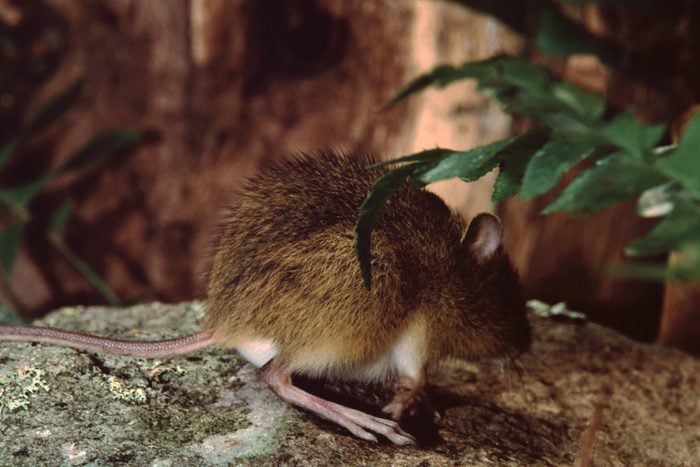
Woodland Jumping Mouse
The woodland jumping mouse (Napaeozapus insignis) inhabits the northeastern U. S. and southeastern Canada as far west as Manitoba and as far south as northern Georgia. It’s large, often eight to nine inches long, including the tail. It’s most recognizable by the white tip on its tail and the brown band that stretches across its reddish-brown fur from head to hindquarters.
These mice hibernate throughout the winter and usually spend the late summer collecting and hoarding food in their burrows. They’re nocturnal omnivores. Perhaps the most notable characteristic of this mouse is its ability to jump long distances — almost 10 feet!
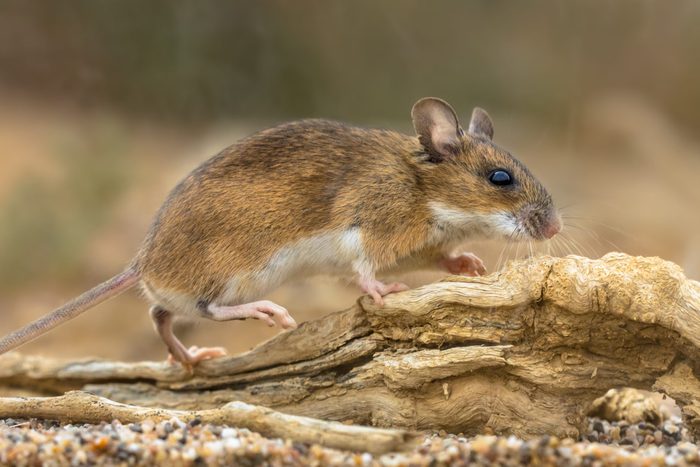
California Mouse
The California mouse (Peromyscus californicus), also known as the California deer mouse, is found only in the West, ranging from northwestern Mexico to central California. It can be 11 inches from the head to the tip of its extremely long tail. The dorsal fur is mostly orange with a mixture of black and brown, with a creamy white underbelly.
Besides seeds and berries, this nocturnal mouse also eats grass, flowers and fungi. Unlike most mice, the California mouse mates with a single partner. The male defends the nest and raises the young to increase the chances of survival.
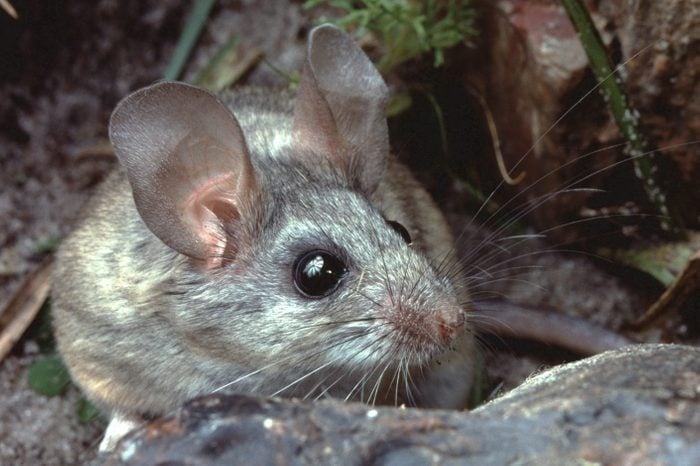
Cactus Mouse
As you might expect, the cactus mouse (Peromyscus eremicus) lives in the desert, from the southwestern U.S. to northern Mexico. Adults grow between six and eight inches long, with mostly gray bodies and an almost hairless tail. They feature large eyes and ears with a pointed snout.
Cactus mice eat seeds, mesquite beans, insects and green vegetation. Active year round, they’re mostly nocturnal but may come out in the daytime. They enter torpor when food and water are scarce.
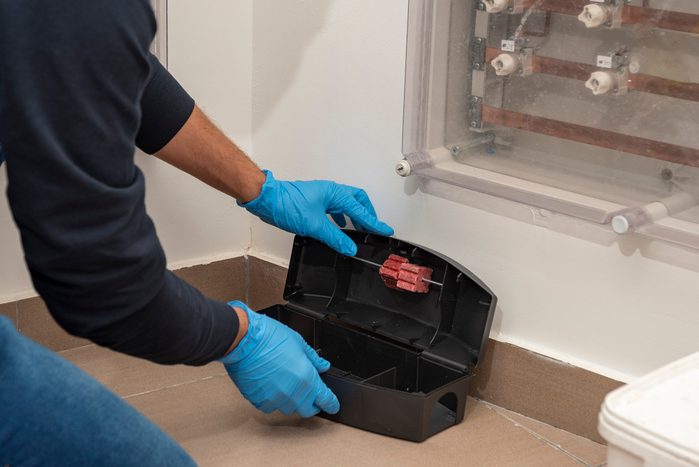
How to Keep Mice Out of Your House
The house mouse is the one most likely to invade your home. But when the going gets tough, all types of mice seek food, shelter and the warmth of homes. That makes exclusion your main control strategy.
How to prevent them from entering
There are two main ways. Fix cracks in your foundation and seal the baseboards with caulk, being mindful that some mice can squeeze through an opening as small as 1/4-inch. And keep your house clean and dry.
How to get rid of them
Choose between live or lethal traps. If you go with live trap, be sure to release the mice far from your home and neighboring houses, too. Remember, white-footed mice can find their way back from two miles away.
Another option is to call in a professional exterminator.
